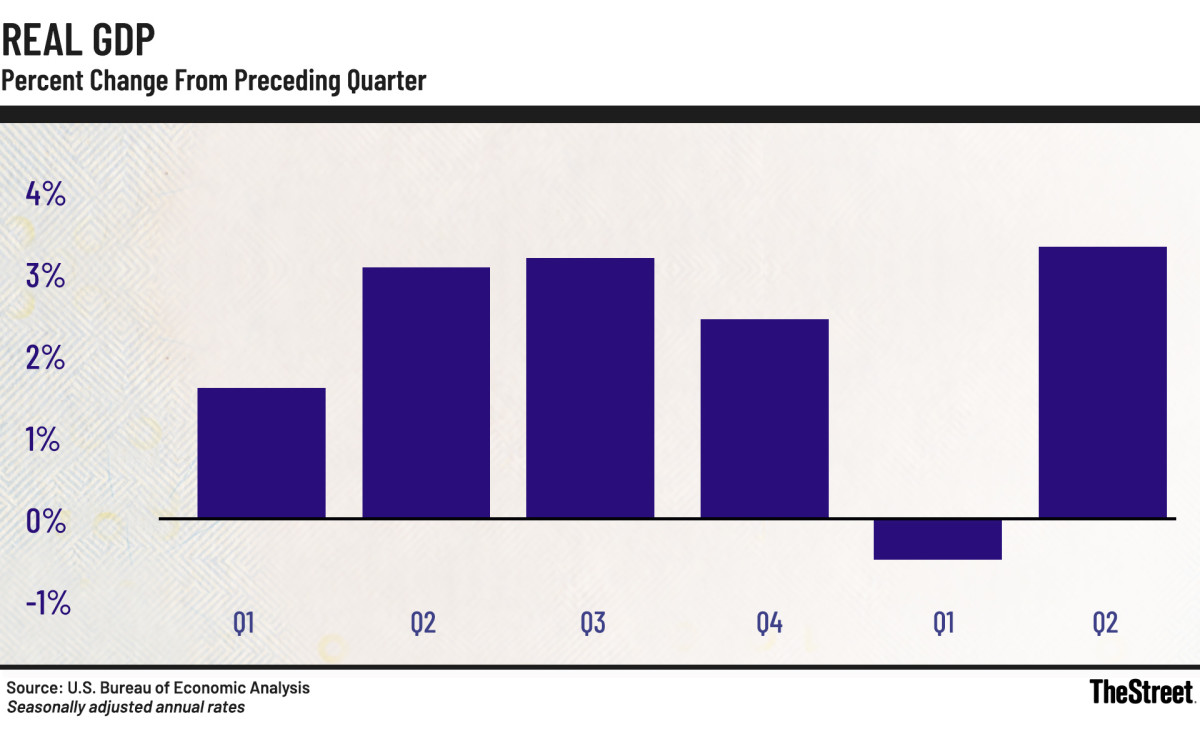One of the biggest worries this year has been that a combination of sticky inflation and pricing pressure following newly enacted tariffs may force more households and businesses to retrench, slowing economic activity, causing job losses, and denting corporate profits.
There’s reason for concern:
- The U.S. unemployment rate is 4.3% in August, up from 3.4% in 2023, according to the Bureau of Labor Statistics.
- Year-to-date, layoffs through August total 892,362, up 66% year over year, according to Challenger, Gray, & Christmas.
- There were 7.2 million open jobs nationwide in July, down from more than 12 million in 2022, according to the JOLTS report.
- The Consumer Price Index (CPI) shows inflation grew 2.7% in July, up from 2.3% in April.
- Consumer confidence in July fell 10% or more over the past six months, according to the University of Michigan’s survey.
A weaker consumer outlook alongside growing unemployment and inflation isn’t a good recipe for the U.S. economy, leading many to think stagflation, a period of slow GDP growth and stubborn inflation, is coming.
Wall Street economists, including Morgan Stanley analysts, have been watching the potential for GDP to slow as consumers and businesses rethink spending plans.
Morgan Stanley, founded in 1935, is one of the most trusted investment banks on the planet. On September 8, its economists revisited their GDP target for the third quarter, providing insight into the likelihood of stagflation.
Why GDP matters to markets
Gross Domestic Product is a useful barometer for a country’s economic health. It measures:
- A nation’s entire economic output.
- Finished products and services, not intermediate goods and services.
- Goods and services within the country’s borders only.
- A specific time period, such as quarterly or annually.
The quarterly GDP report is a benchmark investors use to gauge whether the economy is growing or shrinking, providing valuable insight into investment decisions.
GDP suggests:
- Whether corporate revenue is rising or falling.
- If companies are likely to hire or lay off employees, and invest in their businesses.
- Whether consumers are confident in their jobs and willing to spend money.
- The direction of monetary and fiscal policy, such as stimulus.
- Whether an economy is in a recession, commonly defined as two consecutive quarters of contraction.

Source: U.S. Bureau of Economic Analysis
There are four primary components of GDP:
- Personal Consumption Expenditures: How much consumers are spending on goods and services.
- Gross Private Domestic Investment: How much businesses are spending on equipment, structures, and residential construction.
- Government Purchases: Government buying of goods and services.
- Net Exports: The value of exports minus imports.
Morgan Stanley resets its GDP forecast for the third quarter
The U.S. economy delivered solid GDP growth in 2024, growing 2.8% for the year.
GDP growth in 2024 by quarter:
- Q1, 2024: 1.6%
- Q2, 2024: 3%
- Q3, 2024: 3.1%
- Q4, 2024: 2.4%
It’s been a mixed bag so far in 2025:
- Q1, 2025: -0.5%
- Q2, 2025: 3.3%
The economy shrank in the first quarter mainly because imports surged so companies could build inventory ahead of President Trump’s tariff announcements, impacting the net exports component of GDP. Increased gold imports also negatively impacted GDP as U.S. investors boosted gold holdings ahead of economic uncertainty associated with tariffs.
More Economic Analysis:
- Fed official sends bold 5-word message on September rate cuts
- New inflation report may have major impact on your wallet
- Surprising GDP report resets backdrop for stocks
- Goldman Sachs revamps S&P 500 target for 2026
With inventories flush, companies didn’t have to bring as much product into the U.S. in Q2, allowing GDP to rebound as imports fell.
“Real imports surged 37.9% in Q1 2025 on front-loading
effects ahead of tariffs. The Q2 GDP data show this process reversed in the second
quarter, with real imports falling 29.8%,” wrote Morgan Stanley analysts in a research note shared with TheStreet.
How imports impact third-quarter GDP remains to be seen, especially since previously paused reciprocal tariffs went into effect in August.
“The Trump administration imposed additional tariffs on trading partners as of August 7
that pushed the effective tariff rate higher to 16.0%,” wrote Morgan Stanley. “July and August data on container traffic suggest weak trade volumes have persisted into the third quarter.”
The weak container traffic suggests that while front-loaded inventories built earlier this year are likely being worked through, lower import volume may again help GDP growth in Q3.
Related: Bank of America reveals inflation forecast ahead of CPI
Morgan Stanley expects GDP to grow again in the third quarter, but more slowly than in Q2, rising 1.5%.
“Our estimate for GDP includes a sharp slowdown in August and September consumption
as tariffs diminish consumer purchasing power. The slowdown in payrolls and payroll
income growth through August supports our expectation,” wrote the analysts.
The 1.5% GDP estimate is up from a prior 1.2% forecast, but is well south of the Atlanta Fed’s GDPNow outlook for growth of 3%.
“The Atlanta Fed GDP nowcast rose 0.8 point to 3.0%, mostly reflecting more positive contributions from trade to GDP and to equipment investment. They do not build in the
sharp slowing in consumer spending that we expect and have 3Q consumption at 2.1% vs.
our 0.7%,” noted the economists.
Related: Here’s how stocks react to Fed interest rate cuts
#Morgan #Stanley #resets #GDP #forecast